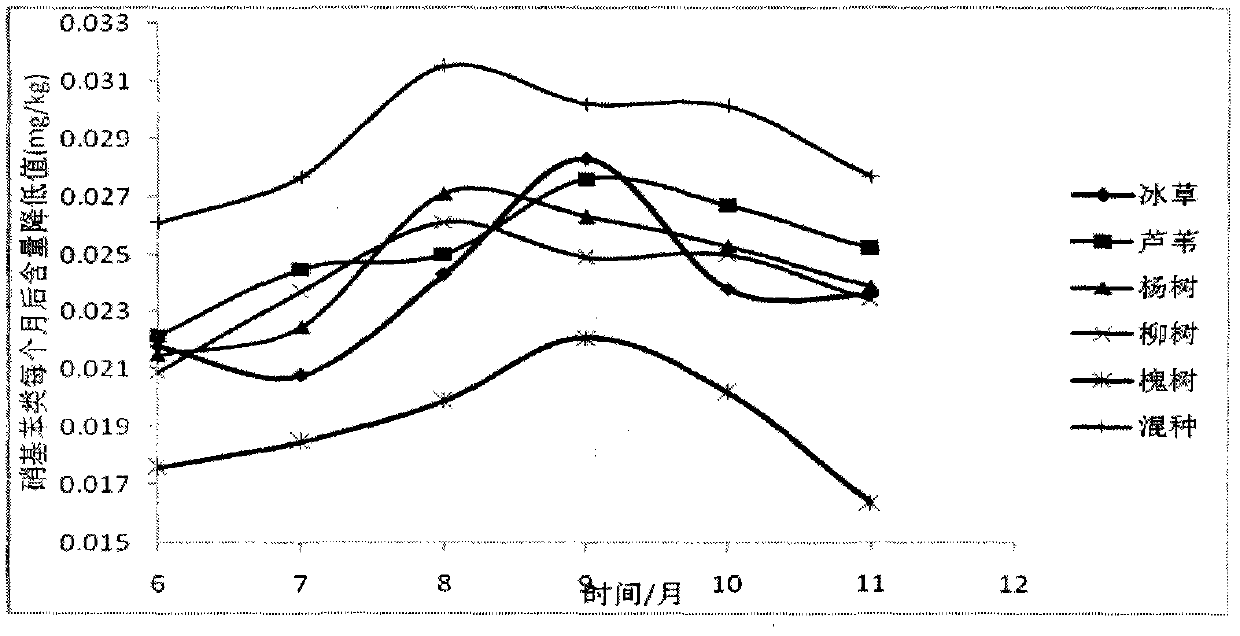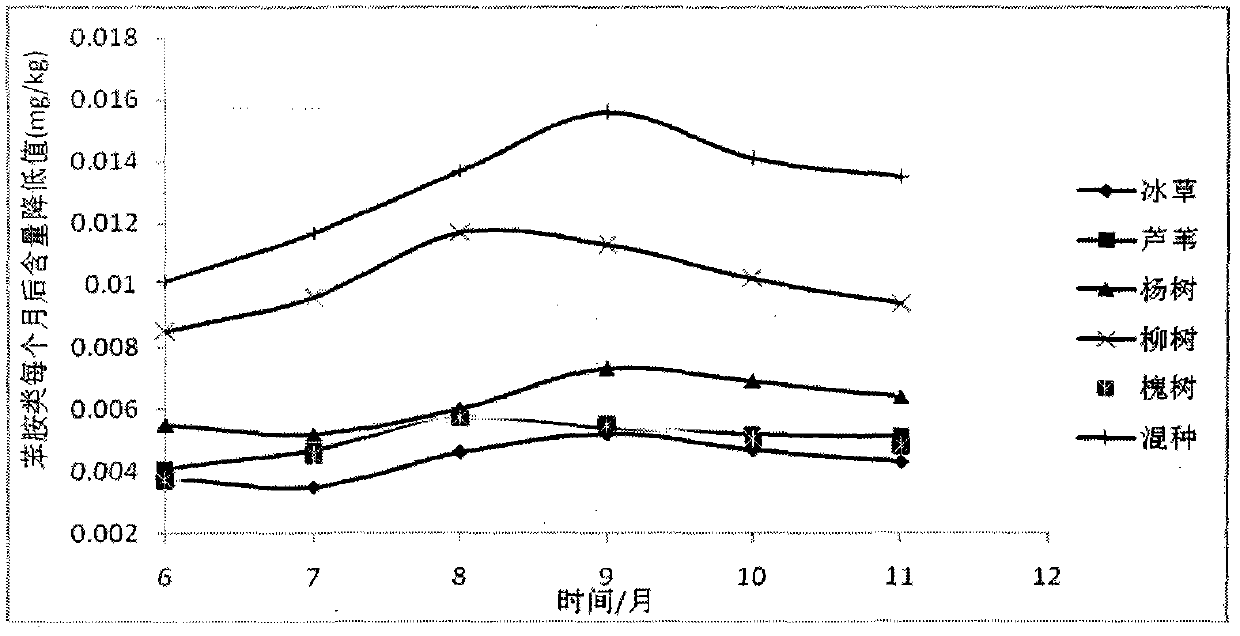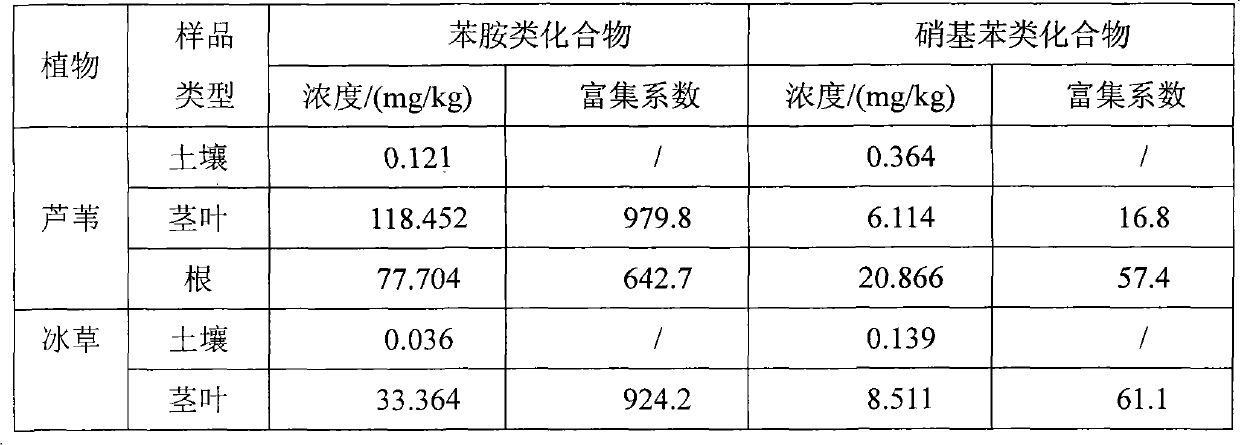Method for treating nitrobenzene and phenylamine waste water by using plant system
A technology for nitrobenzene and waste water, which is applied in the field of water pollution treatment, can solve the problems of disturbing the natural ecological environment, complicated control conditions and high treatment costs, and achieves the effects of improving the quality of the ecological environment, reducing investment and retaining soil.
- Summary
- Abstract
- Description
- Claims
- Application Information
AI Technical Summary
Problems solved by technology
Method used
Image
Examples
Embodiment 1
[0027] A method for treating nitrobenzene and aniline wastewater using a plant system, comprising:
[0028] a. Improve soil acidity and alkalinity
[0029] For dry land, depressions, wetlands, tidal flats, and swamps with alkaline soil, apply decomposed fine-grained natural organic fertilizer - manure. The manure is the accumulated manure of cattle, sheep, pigs and poultry, and the application rate is 2 tons / mu; the acidic soil is applied with carbonate lime improver, and the application rate of carbonate lime improver is 0.2 tons / mu, until the soil pH is 7;
[0030] b. Planting of poplar, willow, locust tree, ice grass and reed
[0031] Mix poplars, willows, pagoda trees, and wheatgrass on the above-mentioned dry land, depressions, and tidal flats: the row spacing of poplars, willows, and locust trees × the spacing between plants is 5 × 5 meters, and the row spacing of poplars, willows, and locust trees is 5 × 5 meters. The seed sowing rate is 1.2 kg / mu;
[0032] Select th...
experiment example 1
[0038] Test the absorption and enrichment effects of 10 species of poplar, weeping willow, locust tree, red leaf plum, red willow, elm, reed, wheatgrass, foxtail, and buckwheat on the two types of pollutants in soil, nitrobenzene and aniline
[0039] The present invention respectively planted poplar, weeping willow, locust tree, red leaf plum, red willow, elm, wheatgrass, foxtail, and mountain buckwheat on dry land in March 2010, reeds were planted on swampy land, and soil and plant stems and leaves were collected in November. , root, and branch samples, measure the concentration increment of pollutants in each plant after 8 months, and calculate the enrichment coefficient. The results are shown in Table 1:
[0040] Table 1 Absorption and enrichment effects of different plants on two types of pollutants in soil
[0041]
[0042]
[0043] It can be seen from Table 1 that among the 10 species, willow, poplar, locust tree, wheatgrass, and reed plants have very high enrichme...
experiment example 2
[0045] Test the effect of different planting methods on the removal of pollutants in the soil
[0046] The present invention was carried out in the dry land of single species of willow, poplar, locust tree and ice grass, the swamp of single species of reed, and the dry land of mixed species of willow, poplar, locust tree and ice grass from May to November, 2010. Collect samples at 20 cm from the soil surface, measure the pollutant content in the soil layer before and after, compare the changes, and calculate the restoration efficiency of plants to pollutants in the soil. The results are shown in Table 2 and Table 3:
[0047] Table 2 Effects of different planting methods on the removal of pollutants in soil
[0048]
[0049]It can be seen from Table 2 that the single and mixed planting of plants on the site have different effects on the removal of pollutants in the soil. When the five species of willow, poplar, locust tree, wheatgrass, and reed were planted alone, the remed...
PUM
 Login to View More
Login to View More Abstract
Description
Claims
Application Information
 Login to View More
Login to View More - R&D
- Intellectual Property
- Life Sciences
- Materials
- Tech Scout
- Unparalleled Data Quality
- Higher Quality Content
- 60% Fewer Hallucinations
Browse by: Latest US Patents, China's latest patents, Technical Efficacy Thesaurus, Application Domain, Technology Topic, Popular Technical Reports.
© 2025 PatSnap. All rights reserved.Legal|Privacy policy|Modern Slavery Act Transparency Statement|Sitemap|About US| Contact US: help@patsnap.com



